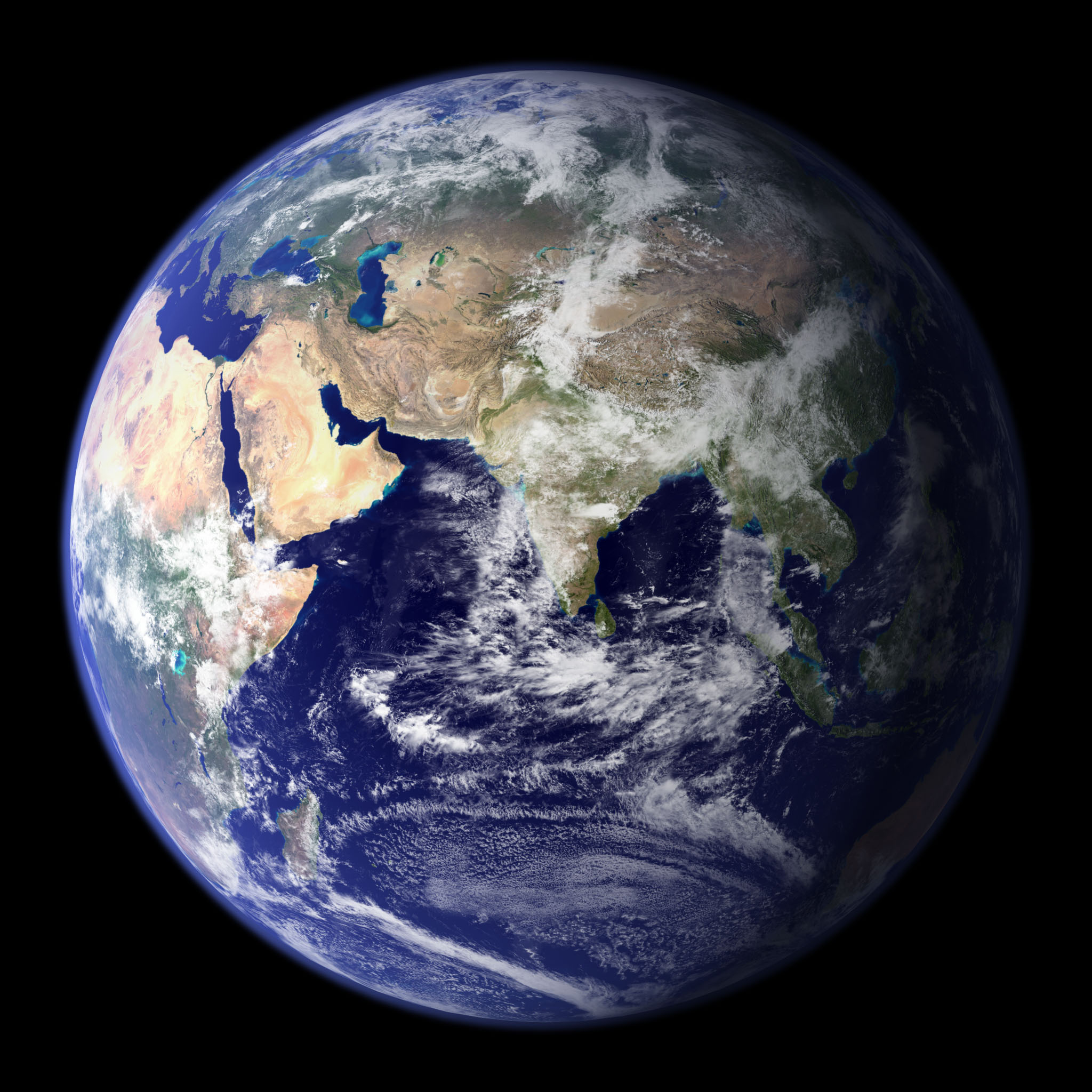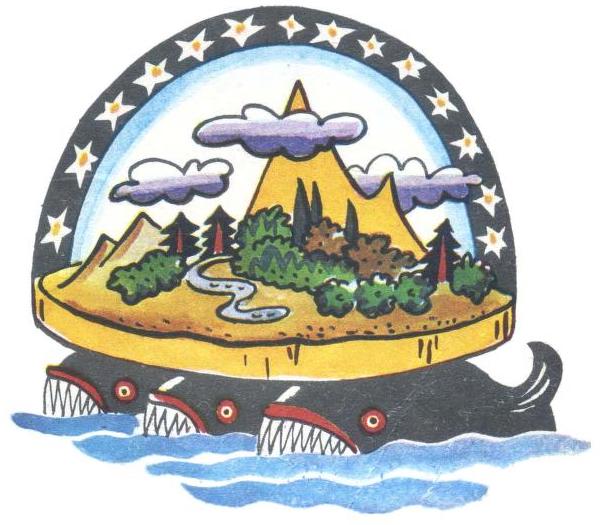What is the evidence for a round Earth?
In this post, we explore some of the evidence for proving that the Earth is indeed spherical in shape (if not a perfect one), and not a flat one. Though in the current age we can all point to the images of Earth taken from space (like the one shown below)

In the age of satellites is easy for us to dismiss the doubting minds who think that the Earth is not flat. But this was always not so. Apart from the evidence from the space age, people in the past had good evidence and arguments for believing that the Earth was indeed spherical in shape and not flat or any other shape. Somehow this misconception that all ancient people considered that the Earth was flat, was generated in nineteenth-century science books.

Ancient evidence

It is commonly believed that people till very recently believed that the Earth is flat and that some European explorers, by circumnavigating the Earth, proved that it was round. But this is not correct. Ancient Greeks already knew about the spherical shape of the Earth, and it forms the basis of many cosmological models that they built. This, in turn, had implications for the philosophical worldview of the ancient
Aristotle presents us with one of the first evidence for the roundedness of the Earth. For the ancient Greeks, the circle and the sphere presented the perfect form in nature. This was also tied to their worldview in which the celestial and terrestrial was demarcated from each other. The celestial bodies, which included the planets and stars were supposed to be perfect. There were seven planets known to the ancients, which included the Sun and the Moon. The planets were supposed to be spherical themselves revolving with a constant speed in circular orbits around the Earth. One of the core assumptions was that the heavens are unchangeable. So anything that was considered celestial was by definition (a) perfect (spherical or circular), (b) unchangeable (constant). So any mechanism that explained celestial phenomenon had to include these two concepts.
The cosmology of the ancient Greeks then was built upon these basic assumptions which were non-negotiable for them. This lead to the formation of various models based on the basic theme of a fixed Earth and planets on circular orbits moving constant speeds. Due to these assumptions and also due to some observed phenomena, led to the conclusion that Earth should also be indeed spherical.
Let us look at the arguments given by Aristotle in this regard. This is from Book II of On the Heavens.
The shape of the heaven is of necessity spherical; for that is the shape most appropriate to its substance and also by nature primary.
Part 11
With regard to the shape of each star, the most reasonable view is that they are spherical. It has been shown that it is not in their nature to move themselves, and, since nature is no wanton or random creator, clearly she will have given things which possess no movement a shape particularly unadapted to movement. Such a shape is the sphere, since it possesses no instrument of movement. Clearly then their mass will have the form of a sphere. Again, what holds of one holds of all, and the evidence of our eyes shows us that the moon is spherical. For how else should the moon as it waxes and wanes show for the most part a crescent-shaped or gibbous figure, and only at one moment a half-moon? And astronomical arguments give further confirmation; for no other hypothesis accounts for the crescent shape of the sun’s eclipses. One, then, of the heavenly bodies being spherical, clearly the rest will be spherical also.
In Part 13 of the book Aristotle talks about the shape of the Earth.
There are similar disputes about the shape of the earth. Some think it is spherical, others that it is flat and drum-shaped. For evidence they bring the fact that, as the sun rises and sets, the part concealed by the earth shows a straight and not a curved edge, whereas if the earth were spherical the line of section would have to be circular. In this they leave out of account the great distance of the sun from the earth and the great size of the circumference, which, seen from a distance on these apparently small circles appears straight. Such an appearance ought not to make them doubt the circular shape of the earth. But they have another argument. They say that because it is at rest, the earth must necessarily have this shape. For there are many different ways in which the movement or rest of the earth has been conceived.
Here we see the cognisance of the fact that the curvature tends to be linear when see it is too large. Aristotle then goes on to discard the ideas by Anaximenes, Anaxogoras and Democritus who claim that flatness of the Earth is responsible for it being still. He argues, even a spherical Earth can remain at rest. The Earth being at rest and it being spherical are related. In Part 14 he takes this discussion further. The first argument uses the symmetry of weight distribution.
Its shape must necessarily be spherical. For every portion of earth has weight until it reaches the centre, and the jostling of parts greater and smaller would bring about not a waved surface, but rather compression and convergence of part and part until the centre is reached.
He further argues using reasoning of additional weight distribution how a spherical Earth can still be
If the Earth was generated, then, it must have been formed in this way, and so clearly its generation was spherical; and if it is ungenerated and has remained so always, its character must be that which the initial generation, if it had occurred, would have given it. But the spherical shape, necessitated by this argument, follows also from the fact that the motions of heavy bodies always make equal angles, and are not parallel. This would be the natural form of movement towards what is naturally spherical. Either then the earth is spherical or it is at least naturally spherical.
After this, he looks at evidence from lunar eclipses to reason that Earth is indeed spherical.

The evidence of the senses further corroborates this. How else would eclipses of the moon show segments shaped as we see them? As it is, the shapes which the moon itself each month shows are of every kind straight, gibbous, and concave-but in eclipses the outline is always curved: and, since it is the interposition of the earth that makes the eclipse, the form of this line will be caused by the form of the earth’s surface, which is therefore spherical.
Finally Aristotle takes into account the fact that stars change their positions in the sky relative to the horizon when we move to North or South, indicating that we are indeed on a spherical surface. This will not happen on a flat surface.

Again, our observations of the stars make it evident, not only that the earth is circular, but also that it is a circle of no great size. For quite a small change of position to south or north causes a manifest alteration of the horizon. There is much change, I mean, in the stars which are overhead, and the stars seen are different, as one moves northward or southward. Indeed there are some stars seen in Egypt and in the neighbourhood of Cyprus which are not seen in the northerly regions; and stars, which in the north are never beyond the range of observation, in those regions rise and set. All of which goes to show not only that the earth is circular in shape, but also that it is a sphere of no great size: for otherwise the effect of so slight a change of place would not be quickly apparent.
Another evidence which can be seen since antiquity is that the masts of the ships on ocean became visible first on the horizon, the ship appear later. This can be simply explained by assuming that the surface of the ocean is curved too.

Thus we have seen the ancient evidence for a spherical Earth. It was well known and well established fact, both theoretically and empirically.
Images from:
All About The Telescope – P. Klushantsev
A Book About Stars and Planets – Y. Levitan
Physics for The Inquiring Mind – Eric Rogers.

